top of page

The purpose of physics is to understand the universe both microscopically and macroscopically. It is one of the most ancient sciences based on observation, the creation of right questions and finally the attempt to explain the phenomenon. Questions like 'What is matter and light?', 'How is gravity explained?', 'What is electricity?' have resulted in changing the way we perceive our world.
Physics aims at the mathematical explanation of a phenomenon, it is therefore a rigorous science as all natural phenomena are governed by mathematical expressions. This is why no matter how many times we repeat an experiment we should get the same result (with a small experimental error). Understanding the world, and especially the interaction of light with matter, had fascinated me as a student and so I chose this direction.
In order for a person to be able to evolve in this area, it is necessary to understand the rules as memorization has minimal benefit. That is why it is crucial for the teacher to be able to develop ways of learning that, on one hand, stimulate interest, and on the other hand, help to understand the course material for the student. I have been working on this part for the last 10 years or so, having developed methods based on multisensory learning.
Multisensory learning is one of the most effective ways of teaching [1, 2, 3]. More specifically, I create material such that the student perceives and processes information with as many senses as possible.
Below are some examples of how I teach.
Example 1: Lossless Pendulum | Concerns: Students
Animation of a pendulum without losses. The bottom graph shows, in real time, the oscillation of a pendulum as time passes. From this graph one can understand the periodic (repetitive) motion, calculate the period of a complete oscillation, its frequency, etc.
The student has the option to change some parameters such as the length of the pendulum or the initial angle and dynamically observe the change in motion.

Example 2: Lossy Pendulum | Concerns: Students
Animation of a pendulum with losses. The bottom graph shows, in real time, the oscillation of the pendulum as time passes. This more realistic example takes into account any pendulum losses (e.g. air resistance or mechanical losses) and shows how the oscillation decays over time.
The student has the option to change the amplitude of the decay and dynamically observe the change in motion.
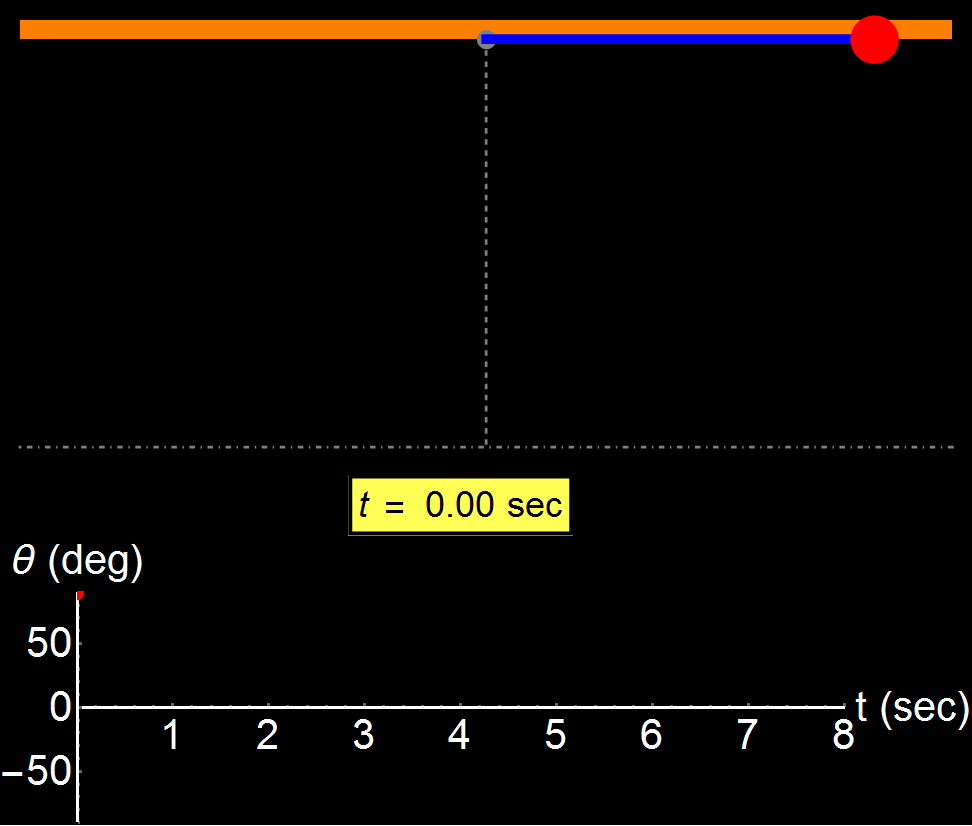
Example 3: Lossless Spring | Concerns: Students
Animation of an object attached to a lossless spring. The graphs show, in real time, the change in displacement (x), velocity (υ) and acceleration (a) as time (t) evolves. From these diagrams, one can calculate the amplitude of the oscillation, its period and frequency, etc.
An important conclusion is that, since the phenomenon is periodic, all the calculated parameters (x, υ, a) also have a periodic behavior.
The student can change various parameters such as object's mass, spring constant or oscillation amplitude and dynamically observe the change in motion.
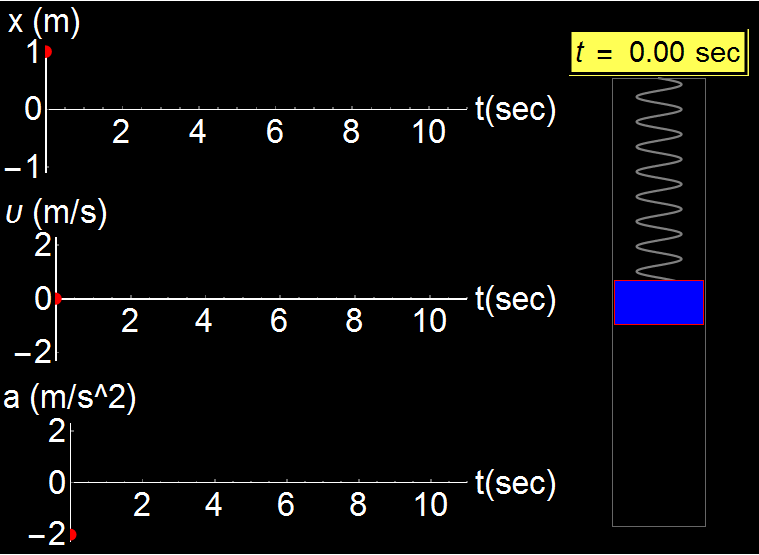
Example 4: Lossy Spring | Concerns: Students
Animation of an object attached to a lossy spring. The bottom graphs show, in real time, the change in displacement (x), velocity (υ) and acceleration (a) as time (t) evolves. This more realistic example takes into account any pendulum losses (e.g. air resistance or mechanical losses) and shows how the oscillation decays over time.
The student has the option to change the amplitude of the decay and dynamically observe the change in motion.
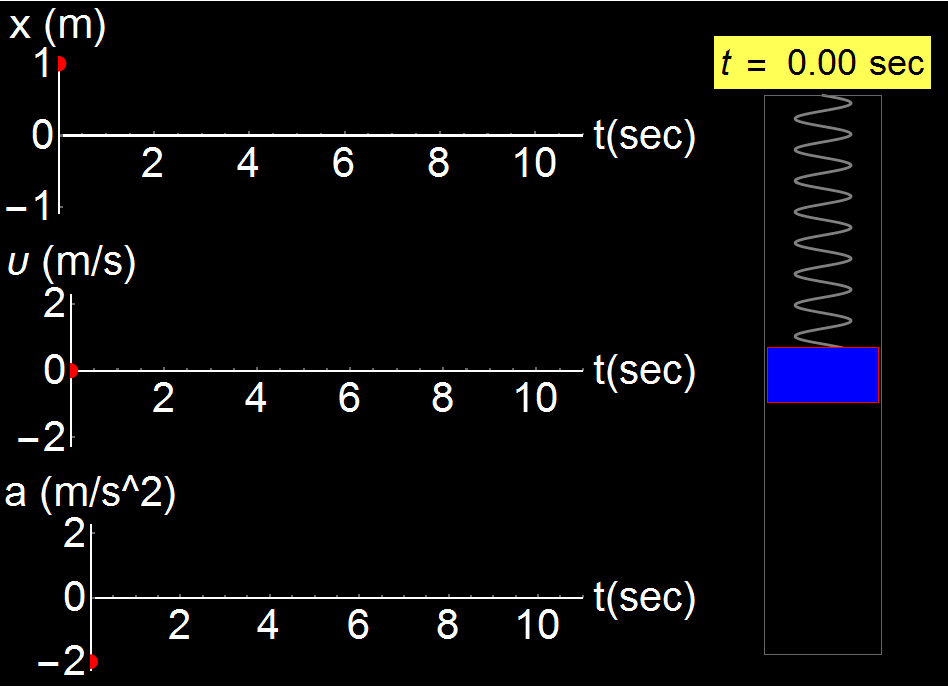
Example 5: Origin of Magnetism in Matter | Concerns: Students & Graduate Students
Matter consists of small particles (atoms) and each one has electric and magnetic properties. In this animation we see how each atom (represented by a magnet) is oriented in the direction of an external magnetic field (purple arrow). In the case where the external field is weak (small arrow) the magnets (atoms) are randomly arranged in space and so the material as a whole is non-magnetic. However, when the external field is strong (large arrow) the atoms are oriented in parallel to the external field and thus the material exhibits, macroscopically, magnetic properties.
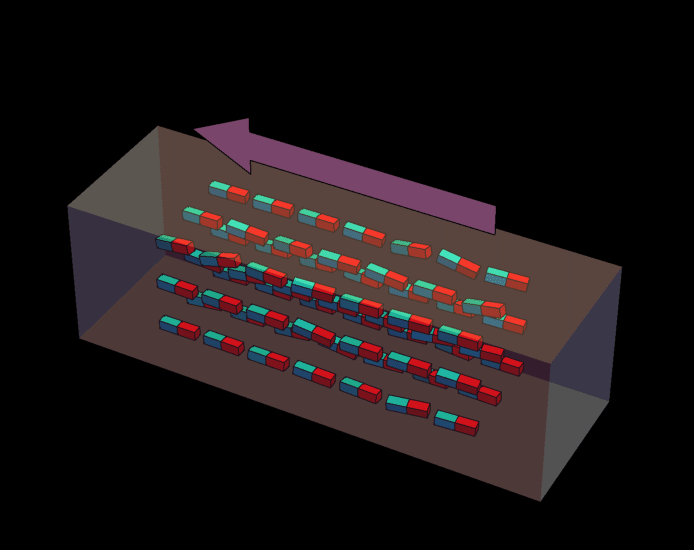
Example 6: Magnetic Field in a Circular Conductor | Concerns: Students
A classic problem for high school students is the magnetic field in a circular conductor. In this example, I draw in space the magnetic lines (blue curves) that are created due to the current (i) that flows through the conductor. We observe that as the current increases, the magnetic lines become more dense. In fact, in the area inside the conductor the magnetic lines are denser in relation to the outer space, which means that the magnetic field is stronger.
The student can change both the intensity of the current and the radius of the conductor and dynamically observe the distribution of the magnetic field around it.
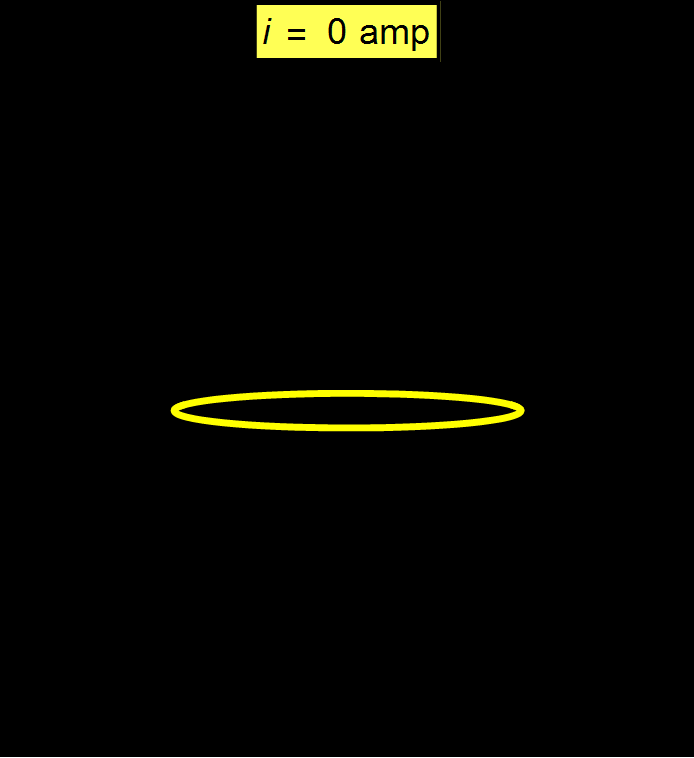
Example 7: Independence Principle | Concerns: Students
Image Α: Free fall of two identical bodies (blue and red). Structure of bodies and external conditions are the same, consequently, both bodies reach the ground at the same time (2 sec). Image Β: A horizontal initial velocity is applied on the blue body. One would expect the red body to reach the ground faster. However this is not the case since the initial velocity of the blue body is perpendicular to the free fall axis. As a result, the two motions are independent and the two bodies reach the ground simultaneously! This phenomenon is known as INDEPENDENCE PRINCIPLE for complex motions.

bottom of page